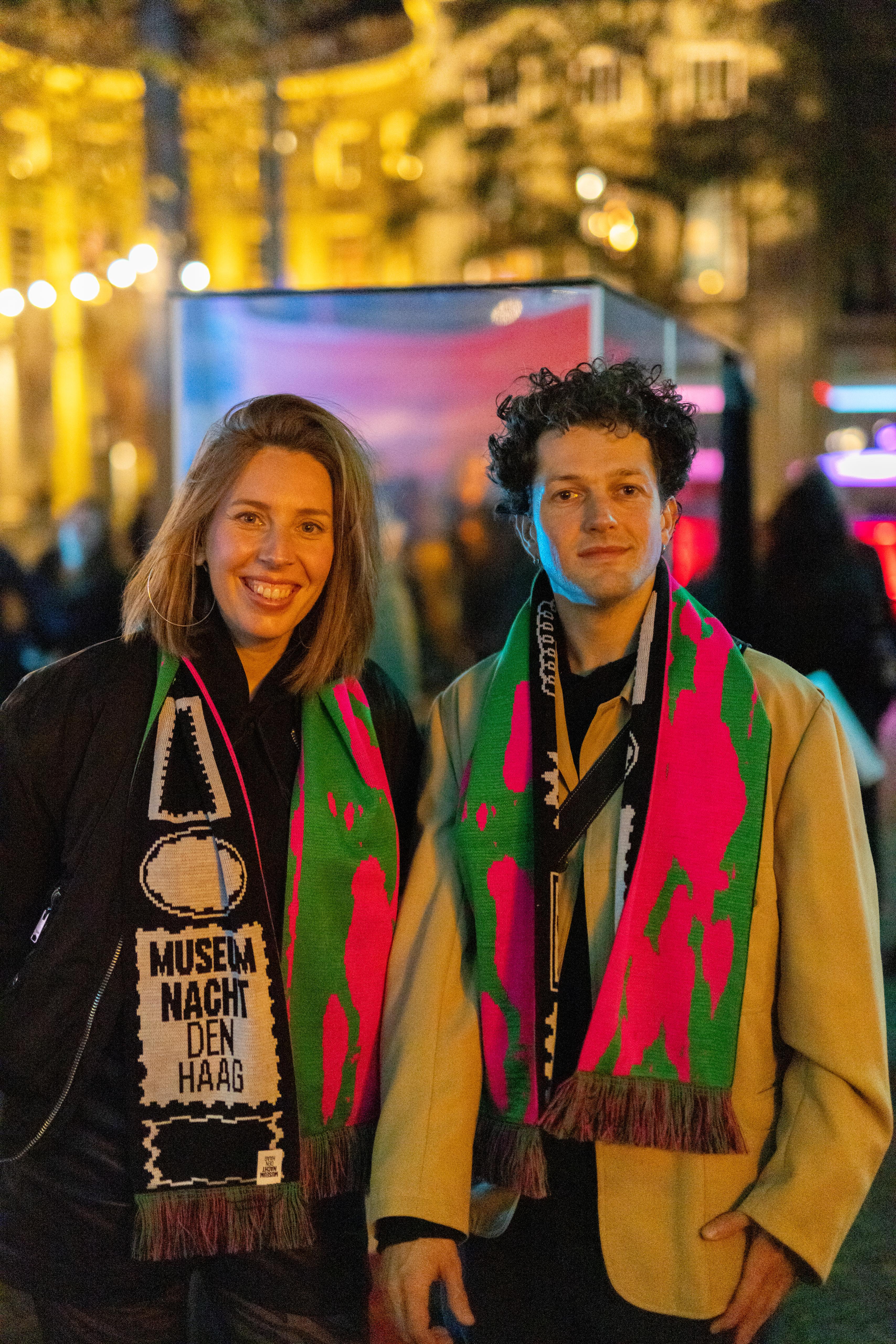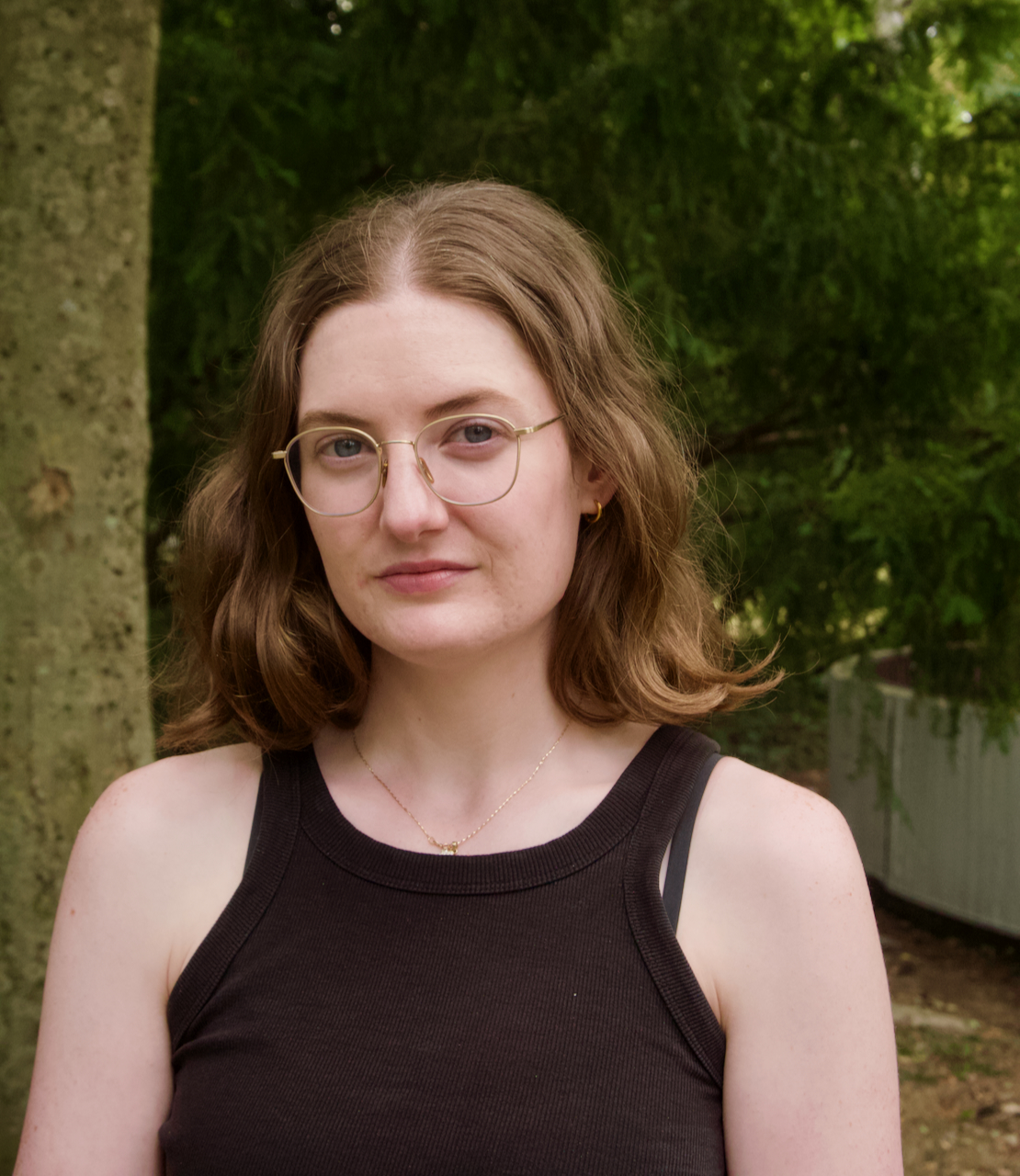Karin Arink is an established artist and tutor with a significant presence in contemporary art. Notably recognized for winning the Prix de Rome, her work delves into the complexities of identities and relationships. At Willem de Kooning Academy, she provides thoughtful guidance to students and teachers both as a tutor and course leader within the (de) Fine Art and Photography department. Through her expertise in textiles, installations, and body forms, she explores the fluid nature of self-expression. Arink's collaborative teaching approach envisions a more interconnected educational future. In this interview, you can read more about her career path, time at the academy and relationship with art.
] Photography by Aad Hoogendoorn
Photography by Aad Hoogendoorn
Can you tell us about your background and how you became an artist?
I studied sculpture and multimedia at WdKA. After graduation, I got a place at the Rijksacademie and soon won a big prize, Prix de Rome. I got famous very quickly and exhibited my work at various exhibitions. I then found a studio in artist-run Foundation B.a.d, we did collaborative projects internationally for few years. My work is about how I exist in relation to others and make this visible. I believe that identities are not fixed, and we play different roles. I make textile works and installations and use body shapes to make these states of self visible.
What is your subject of knowledge?
I know about art and photography, specifically their societal impact and representational power. I connect very strongly with people, and I try to never judge. When working with students or tutors, I try to feel what they need and use my own experiences to help them. I am an expert in doubts, failing, and insecurity, and I focus mostly on the process of creating, not so much the result.
How did you start working at Willem de Kooning Academy?
I was asked to be an advisor at WdKA by my favorite former tutor, Ton van Dalen. At first, I was not very enthusiastic about working at the academy, but I agreed to help him out. Then I found out that I really enjoyed teaching, and after eight years of temporary contracts, I became a tutor and later study coach. In 2012, Jeroen Chabot asked me to become the course leader for fine art and also photography. I am not a photographer, but I understand WdKA and focus on organizing. I have been in this position for 11 years now and I’m still very happy here.
What defines you as a tutor?
As a tutor, what defines me is my openness, curiosity, and helicopter view of our education. I care a lot about my students and their progress, sometimes even to a fault as I care too much. I see myself more as a guide than a teacher, providing insight into the system and the bigger picture. As a course leader, I focus on making the tutors understand where they are, explaining the system, and supporting them in logistical matters. I aim to create understanding between the individual views and perspectives, making the program productive. I also mediate between tutors and management and work on developing the programmes with the tutors. I call myself a ‘state shifter’, as I can switch between different roles and states of being.
You’ve been involved in the academy for quite some time, what changed most throughout the years?
Throughout my time at the academy, I have seen many changes. When I was studying, there was a focus on patriarchy, top-down approaches, and outcome-focused teaching. Later, as a teacher, there was a toxic atmosphere with a previous dean. Right now, things are changing rapidly, and there is more awareness and openness. However, a lot of trust has been broken, and we need to accept that and try and find more common ground. When I look at the future of the academy, I believe in a more democratic system where students should have a more active role in education. For instance with fourth-year students teaching first-year students. I believe this fosters more openness, connection, and learning from each other.
What does art mean to you?
Art is everything to me. I am hooked on the combination of materiality and conceptual thinking that art making is. It allows me to produce something tangible that captures different states of myself. Creating art is therapeutic for me, and it helps me find peace. I find inspiration in life itself, whether it's dance, advertising, song lyrics, thoughts, existing objects, or even anatomy lessons. I spent a year in Japan for a residency and found inspiration in the manydifferent translations of the Japanese word for "body," including one that incorporated the signs for "knife," "spirit," and "wind." Unpacking what the body can be has become a significant inspiration for my art.
How would you describe your artistic style?
Collaboration has always been important in my work because I get bored working alone. I collaborate as part of an artist group, or with friends. I also write, do animation, video, performance, dancing, and drawing. I focus on reflecting on different states and creating visualizations of those states. Intuition, the material and the conceptual are combined. I create images that are partly metaphor, partly embodiment, and that the viewer can interpret and feel.
What is something most students don’t know about you, that you would like to share?
One thing that most students don't know about me is my collaborative work with foundation B.a.d, where I help run the entire building, including exhibition spaces, guest studios, and events. Additionally, in 2009, together with 2 artists, I lobbied for individual artist funding in Rotterdam and talked to politicians in the council. We succeeded to get it done, which was a big accomplishment.


